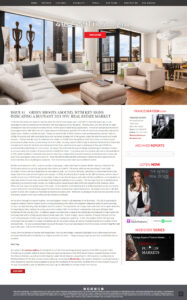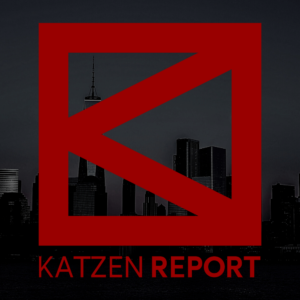I find it hard to believe it’s been 15 months since the COVID crisis began, and I can’t tell if it feels like years ago or just yesterday we were scrambling for information with fear reigning across the globe. Thinking back over this period, it’s been amazing how far we’ve come on so many fronts, not the least of which being asset prices. I would be hard pressed to believe many expected the S&P 500 to be 25% higher than pre COVID levels, and 90% off its March 2020 lows despite the potential for higher taxes, inflation, and interest rates. During the second half of 2020 investors were emboldened by optimism about a COVID-19 vaccine and, with substantial fiscal and monetary stimulus still in the system, piled into both the equity and credit markets. This too was the case for suburban real estate, as COVID fears, the ability to work from home, and social unrest particularly in urban centers pushed many out of our cities. In many cases COVID simply accelerated the timeline of those that had planned to move to the burbs at some point in their lives, which in some ways is analogous to the way COVID has accelerated the proliferation of e-commerce. Of course, this shift went far beyond simply accelerating the decision of some, as we saw many with no plans of leaving the city rethink their future. Few places saw this dynamic play out as dramatically as in NYC, which resulted in a dramatic slow down in deal flow, a large uptick in unsold inventory, and lower prices (if you could even find a reasonable comp set to prove it). Given the aforementioned shift and brokers’ inability to show apartments for several months, this is anything but a surprise. Few times in my career had I seen sentiment so low.
Roll the clock forward to 2021, and the calculus is changing. I often think back to Warren Buffet’s famous statement “be fearful when others are greedy, and greedy when others are fearful.” Of course, while he was speaking of more liquid securities, I think it can have application to real estate as well. As I’ve said in the past, corrections in real estate tend to take longer than in the case of more liquid asset classes. In 2020, it took less than 5 weeks for the S&P to bottom, and less than 6 months to rise to pre COVID levels. In real estate it takes more time for buyers and sellers to find equilibrium, as the decision to trade your home is much more complicated that hitting the sell button on a security. The first sign I look for in identifying the beginning of a recovery is deal volume, as a material uptick means buyers and sellers are aligned in their valuation views. Prices are less important at this stage in the cycle. It’s the stability and bottoming that is what’s important, as It’s very hard to recover without the market finding support at a level that is endorsed by actual transactions. We began to see this in the first quarter of 2021, with volume up materially at almost every price point. While one could argue the bar was low given the COVID slowdown, volumes were very healthy even by historical standards.
As we move through the second quarter, I am seeing green shoots in all segments of my business. The City is beginning to reopen in earnest, and the finance sector is already returning to the office with targeted completion dates of post Labor Day. It’s also my understanding other industries aren’t far behind. The expectation of a longer-term work from home option feels like it’s beginning to fade, making me curious as to the mindset of the “on the fence” suburbanites that soon will begin their commutes for the very first time. In addition, buyers now feel there is value in the market, but also learned (in many cases the hard way) that sellers of high-quality product rarely capitulate. Funny enough, I know a number of buyers that got a bit too “cute” during the pain of 2020, and now find themselves chasing the market up. In fact, the positive shift in demand and momentum has resulted in a number of bidding wars for my resale listings, as well as renewed interest for a number of new developments. As you’ve probably heard me say in the past, if you trust your product, trust the process, and do things the right way, it will come. It feels like that time is now.
Finally, with the plethora of factors that impact New York City real estate, I wanted to highlight some of the more prominent developments that will no doubt have an impact on what’s to come. Things to keep an eye on, and have a wonderful start to summer!
SALT Cap
As I wrote in the previous edition of this report, one of the most under-appreciated aspects of the 2017 tax reform bill’s $10,000 cap on people’s ability to deduct state and local income taxes is the 2025 sunset clause. A powerful group of New York House Members, as well as Senate Majority Leader Chuck Schumer, are pulling for a full repeal, or a workaround, in President Biden’s $1.8 trillion infrastructure on the cap. According to Bloomberg, a full repeal is dead, but it could get raised, or more deductions could be made available for all but the wealthiest of homeowners. As Biden looks for tax revenue to pay for his plan, it’s probably a safe bet that they won’t give up the $88 billion or so that comes from the cap.
It’s not as good as a full repeal. But the pressure from homeowners is working, and any relief in the end would help sustain the market boom.
Inflation
Inflation is here. This normally leads to higher real estate yields, and — this year in particular — Federal Reserve Chairman Jerome Powell has said that there are no plans this year to raise interest rates, according to CNBC. Wall Street is taking him at his word, with the odds that the Federal Reserve’s Federal Open Markets Committee will hike interest rates before the end of the year is less than one in ten. But inflation is a tricky market force, and no one knows how long it can last and how rough the ride will be. Earlier this month, the Bureau of Labor Statistics’ Consumer Price Index, the core gauge of inflation, rose the most in 12 years.
Rock-bottom rates are undoubtedly helping fuel the year-long boom in real estate sales. If rates hold and inflation ticks up, this would be signal a further shift upward for New York City unit prices, which have started to rocket up from their low point last year.
The federal numbers show a spike in shelter prices, especially on vacation homes. Naturally, people have become more comfortable spending on their secondary residences as they’ve replaced their primary homes. But these are nationwide numbers. The New York City bidding wars are having a spillover effect, pricing people out of homes in New Jersey and Connecticut. As long as the residential home supply remains tight and rates remain low, the white-hot market may stay hot for the foreseeable future.
NYC Mayor
Listed prices don’t mean anything if you’re in a market nobody wants to live in. This is why the June 22 primary for the Democratic nomination for New York City’s next Mayor is one of the most important for the future of the industry here. What’s at stake is the post-coronavirus New York City — not just the development, but crime, quality of life, jobs and schools and families. What the hopefuls for the Democratic nomination should keep in mind are some of the key factors to help New York rebuild, keep its neighborhoods healthy, and maintain the city’s status as the most enviable place in the world in which to live. Simplified taxes, less bureaucracy, and a streamlined uniform land-use review procedure would help unleash the pent-up economic energy that will make New Yorkers bounce back even stronger.

